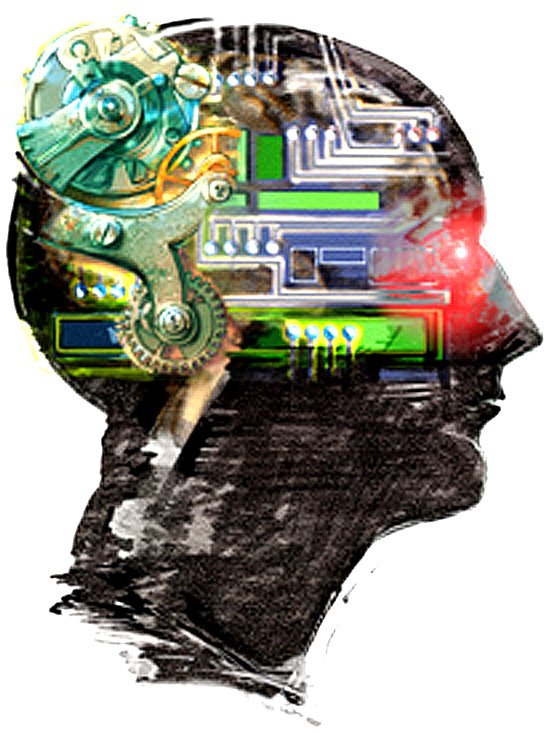Artificial synapses open the road to chips that will work like brains do!
Neuromorphic chips are trying to imitate the way brains work. But to do that they need artificial neurons and artificial synapses that will connect the neurons. Newly-made synapses made from silicon and germanium are the key to artificial brains. And chips the size of a nail with the power of supercomputer would be useful as well.

Artificial Brain - **Source: Wikimedia Commons
The human brain may not look very appealing nor very smart but they still are one of the most advanced computers we ever saw. Even the best supercomputers that we ever built are capable of performing just a very small and specialized segment of the things a human brain is capable of. Thus there is no wonder that engineers and chip designers are trying to imitate the brain and copy all the things it is capable of through reverse engineering. This is how neuromorphic electronics are being created. The research team from MIT has now presented a new type of artificial synapses that are bringing the future closer to us.
Intel presents Neuromorphic Computing at CES 2018 - Source: iGadgetPro YouTube Channel
Existing computers usually work by computing with zeros and ones. But if they could get into the middle ground between ones and zeroes as quantum computers promise, the computing power would dramatically increase. And that is exactly how brains, including ours, work. While we aren’t completely sure on how exactly the processes actually compute in our brains, we only suspect. But we do know they it works with both analog and digital signals, processes and stores data it the same areas and we also know that it does many many operations at the same time. The brain is capable of all this thanks to 100 billion neurons that are connected through 100 trillion synapses.
In existing neuromorphic chips are synapses made from amorphous materials that are enclosed by layers of neighboring neurons. The problem is that these synapses do not tend to be completely uniform and that makes it impossible to precisely control the flow of ions in the synapses and because of that the flow of data between neurons. Jeehwan Kim from MIT with his coworkers have designed a new material to make the synapses out of. Their base is a layer of silicon on which you can find a layer of silicon-germanium alloy. Both layers are arranged in a grid but the upper alloy layer’s grid is slightly bigger, creating a sort of funnel that channel the ions between the neurons.
The MIT team didn’t stop with designing the neuromorphic chip, they also created a computer simulation of this chip, with a height of about 25 nanometers. Now the next step is to actually build such a chip in the real world. Kim hopes that the final result of their research should be a chip the size of nail capable of performing the same task as a supercomputer today.
Sources:
I was just watching a video from Linus Tech Tips where he talked bout CPUS and I saw a headline about the Neuroorphic processors, AND about 5g and EMF radiation and cell towers and newfacial recognition towers being erected in new york city for homeland ssecurity, and how ALl human brains connected with the Interbrain, a special natural wifi in our brains? lol AMAZINg right!
http://www.iflscience.com/brain/gut-feelings-are-the-product-of-a-wifi-connecting-human-brains-to-one-another-claims-scientist/
The essential premise of his argument is that human brains are interconnected and can communicate with one another non-verbally (without fancy pieces of technology) through tiny micro-signals that reveal what another person is thinking. Imagine a "Wi-Fi" connecting human brains to one another or an external cloud that allows us to understand how another is feeling and what their motives might be. Tantam calls this "the interbrain".
This, Tantam argues, is what creates a gut feeling. It is why we “know” something without having a clue why we do. It is what makes laughter contagious, why we automatically smile when our friend smiles, or yawn when the commuter in front of us does the same.
“We can know directly about other people’s emotions and what they are paying attention to,” Tantam told The Telegraph
“It is based on the direct connection between our brains and other people’s and between their brain and ours. I call this the interbrain.”
The idea that a large part of the way we communicate is through non-verbal signals isn’t new. But the interbrain isn’t just about visual cues (say, a raised eyebrow).
According to Tantam, a lot of it could come down to our sense of smell. He argues that tiny changes in someone’s chemistry could emit particles that give away their emotions, whether that’s fear, lust, or something else. Even those with the most polished poker face, so the theory goes, would not be able to hide the scent they give off.
To back up his argument, Tantam points out that the areas associated with smelling have some of the highest levels of neuronal activity in the brain. He also cites their location.
Anyway WOW WOW this is so cool cant wait to see this Assisted telepathy now! SMELL is liek wifi GREAT! Genius! we have Pours that give out Pheremones so we can SEND and RECIEVE!